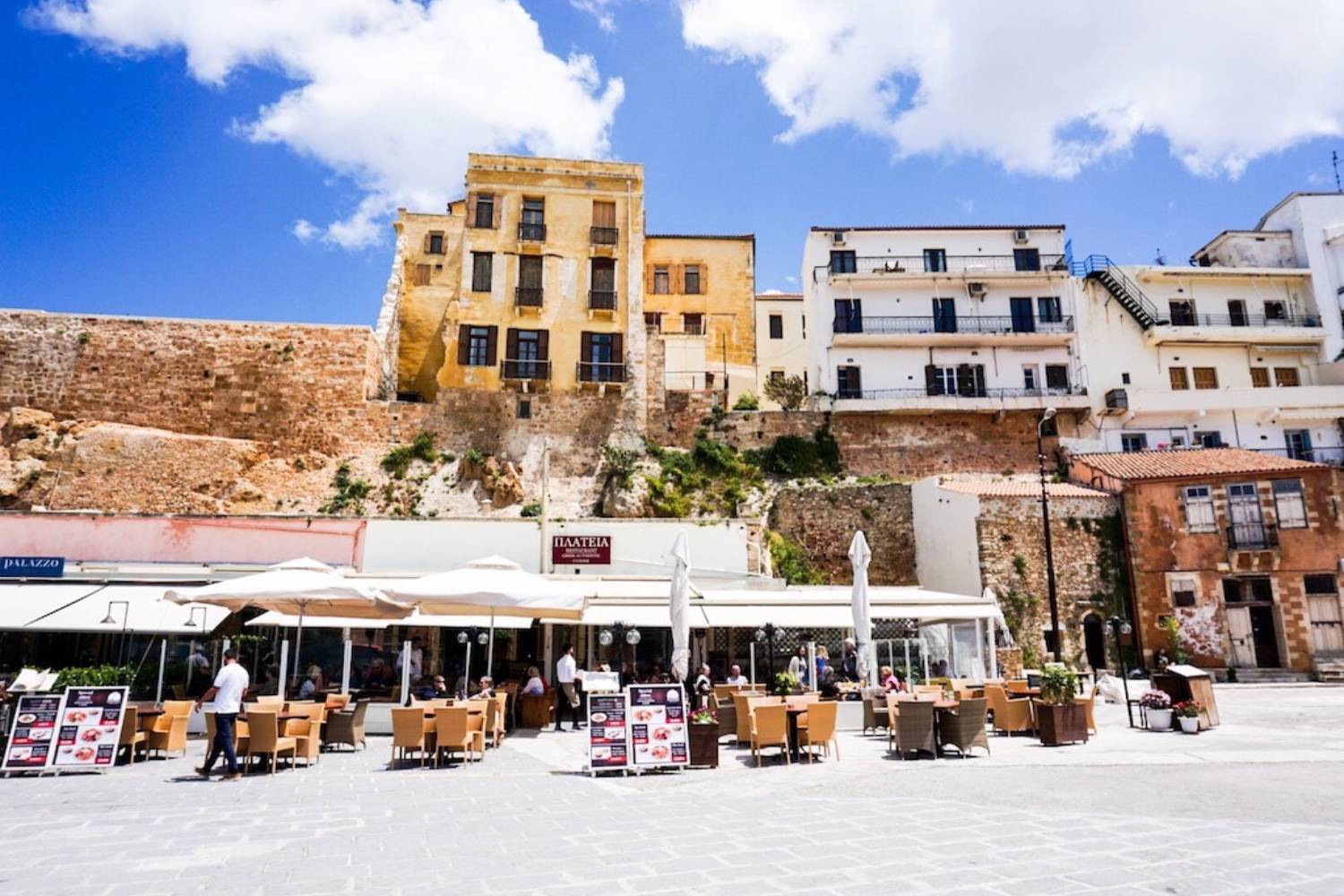Chania, Crete: A Cruise Port Guide
Are you cruising to Chania, Crete? If so, here’s a guide to what to do when your ship docks in this beautiful port town. This guide will tell you all you need to know about the city and what to see and do while you’re there.
This post may contain affiliate links. That means that if you click on a link and purchase something I recommend, I will receive a small commission at no extra cost to you. As an Amazon Associate, I earn from qualifying purchases. This helps keep my website up and running and is very appreciated. Thank you for your support! You can read my full disclosure policy here.
Chania is located about 7 Km east of Souda Bay, on the north coast of Crete. The area is mostly known for its military installations, with Hellenic and NATO bases on its Akrotiri peninsula. However, the area is increasingly seen as a popular tourist destination, with many people wanting to explore the area’s rich heritage and ancient historical sites.
I hadn’t heard of Chania or Souda Bay until the day we arrived. Our cruise ship, Holland America’s Koningsdam, was initially supposed to dock in Santorini. However, much to everyone’s disappointment, the captain had been advised by the Santorini port authority that the weather was too bad for us to dock and the winds too strong for the tender boats. So we were woken to the news that although we could see the beautiful island of Santorini in the distance, we wouldn’t be able to venture ashore.
However, the captain announced that they had found an alternative port that would let us dock, which would be Souda Bay in Crete. So, after a few more hours of sailing, we arrived midday in port without knowing what to do or see. Luckily, as this was an unscheduled stop, Holland America provided free transport to the Old Venetian Port of Chania.

History Of Chania & Souda Bay
The area has a long history, with port facilities in the bay since ancient times, serving the city of Aptera, founded in the 7th century BC. Aptera was eventually destroyed by the Saracens in the 800s AD.
The Venetians occupied the area in 1207 and fortified the bay and its islands with many fortifications to protect themselves from Ottoman raiders and pirates. During this time, the Venetians constructed salt evaporation ponds, which produced around 150,00 kilos of salt each year! During these times, the area flourished, with many inhabitants enjoying a lavish lifestyle.
However, during the last years of Venetian rule, Crete and the rest of Greece were under constant threat of invasion by Turkey. Eventually, In 1645, after two months of siege, the town sundered to the Turks. Extensive destruction followed the conquest. Many churches were levelled whilst others were converted into mosques, and roads and fortifications fell into disrepair.
Over the years, various attempted uprisings against the Turks led to the Greek War of Independence in 1821. In May 1822, 10,000 troops made up of Ottomans, Egyptians and Albanians led by Hassan Pasha disembarked warships in Chania and successfully suppressed the revolt of the Cretans.
Later, In 1832, a Greek state was established. However, this did not include Crete, and the island passed to the Egyptians to acknowledge their assistance against the revolt.
In 1870, Rauf Pasha drained the salt ponds and built a settlement with around 150 Turkish families. During this time, the Cretans were subjected to brutal treatment and high taxes; finally, after years of struggle, the British, alongside the French, Italians and Russians, decided that Turkey could no longer maintain control and intervened with the expulsion of Turkish forces in 1898, which led to the formation of the independent Cretan Republic.
Finally, in 1913, the union with Greece was realised. Under the Treaty of London, Sultan Mohammed II relinquished his formal rights to the island. In December, the Greek flag was raised at the Firkas fortress in Chania, with Venizelos and King Constantine in attendance, and Crete was unified with mainland Greece.
During World War 2, the Cretan desire for independence resurfaced after Mussolini’s Italian forces tried to gain control of northern Greece. After Mussolini’s failure, Greece became the target of Hitler’s forces. In April of 1941, Nazi Germany began its attack against mainland Greece, rapidly penetrated the Greek defences, and occupied the country. The battle for Crete lasted only ten days, with huge losses on both sides. Eventually, allied forces had to retreat and evacuate to Egypt. The German occupation lasted four years until the end of the war.
Today, Souda Bay still holds a massive allied military base and a large War Cemetery where more than 1500 commonwealth servicemen are buried.
Where Do Cruise Ships Dock
Most cruise ships will dock at Souda Bay port. However, some ships may dock near the old Venetian port and use tenders to ferry people into the port.
Our ship arrived in Souda Bay. Although Holland America already arranged transport, a regular bus runs from outside the port into the old Venetian port, which takes around 15 minutes and costs €3. Plenty of taxis will also be willing to take you into town and other places further afield.
Things To Do In Chiana:
The Old Harbour
The first thing you need to do once you get off the bus in Chania is to make your way down to the old harbour. This place was an unexpected highlight of our cruise. At first, when we got off the bus, we were a little disappointed as we had been dropped off in what looked like a typical Greek urban town with nothing looking particularly interesting.
However, we followed a little map given to us at the port and made our way to the harbour. As we got closer we found more and more tourist shops and it started to look more like the typical tourist destination I generally expected in Greece with the usual leather sandal shops and trinket stores. Eventually, we found ourselves looking at one of the most beautiful harbour views I’d seen in a long time!
Many shops and restaurants surround this large harbour, looking out onto the most beautiful clear blue sea. In the distance, you can see the old Venetian walls wrapping around the harbour, with Its Venetian lighthouse sitting proudly at the mouth of the harbour!

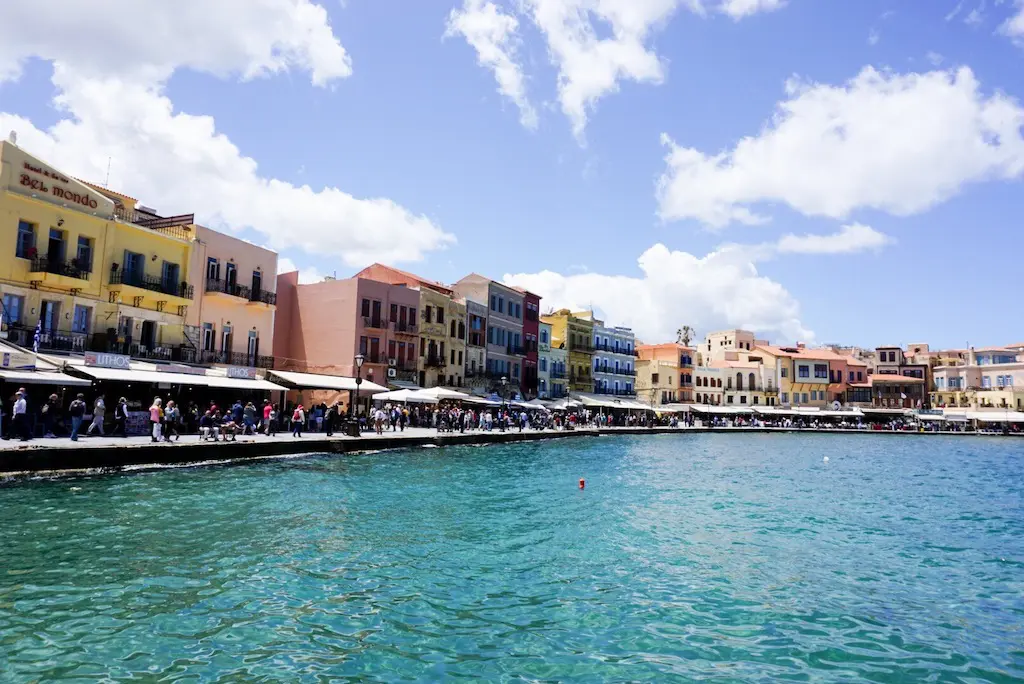
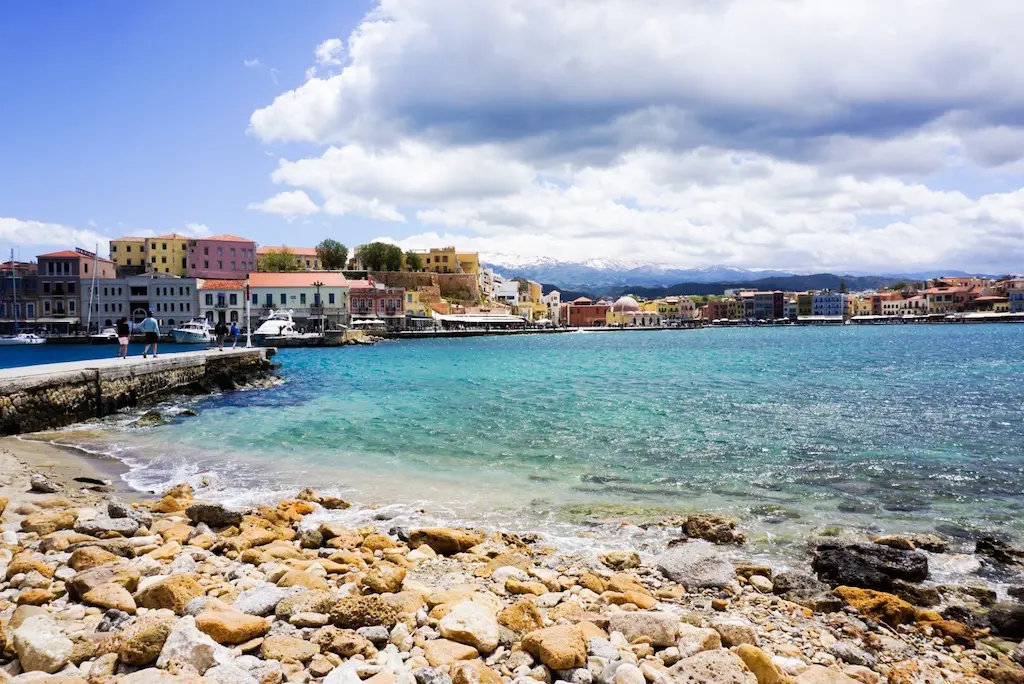
The Venetian Lighthouse
The Venetian lighthouse is one of the most prominent attractions in Chania. Although you can’t go inside, it’s a beautiful walk giving you fabulous views of the harbour and the mountains behind.
To get to the lighthouse, you need to walk along the promenade towards the right side of the harbour towards the marina. It’s a bit of a walk, but eventually, you will reach the old stone wall where the harbour meets the sea. From here, you can walk along its walls right towards the lighthouse. Be careful walking along its top tier; there are no safety rails!


Maritime Museum of Crete
You will find the Maritime Museum near the left side of the harbour near the fortress. If, like me, you love history, you will love this little museum. It houses various displays setting out Crete’s maritime history, including an exhibition about the battle for Crete in 1941. The entrance fee is €4.00



Exhibition of Ancient Naval Architecture
Walking towards the harbour walls towards the lighthouse, you will pass the old Moro docks that date back to the 17th century. You will find the Exhibition of Naval Architecture within one of these buildings. Inside, you will find a reconstructed 15th-century Minoan ship and other artefacts and displays relating to ancient navigation and shipbuilding. This is a great little exhibition and worth its €2 entrance fee.
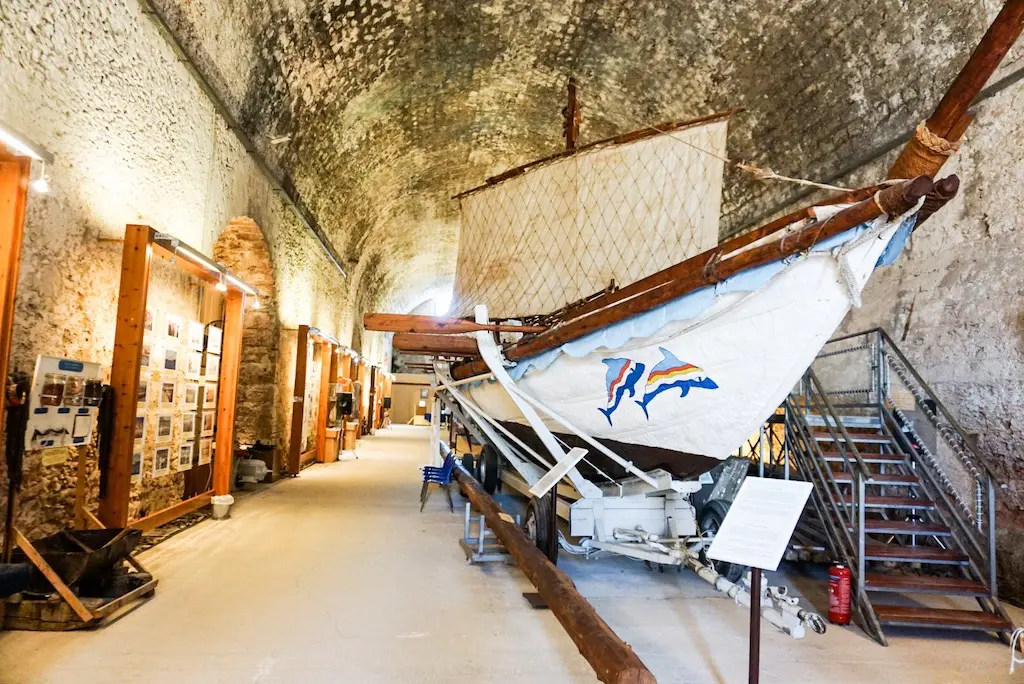

Wander the ancient streets
Like many other old Greek settlements, the streets of Chania are perfect little places to wander and explore. So many old cobbled streets are lined with well-preserved historic buildings, all with various Venetian, Ottoman and neoclassical influences. It is a picture-perfect place to explore.
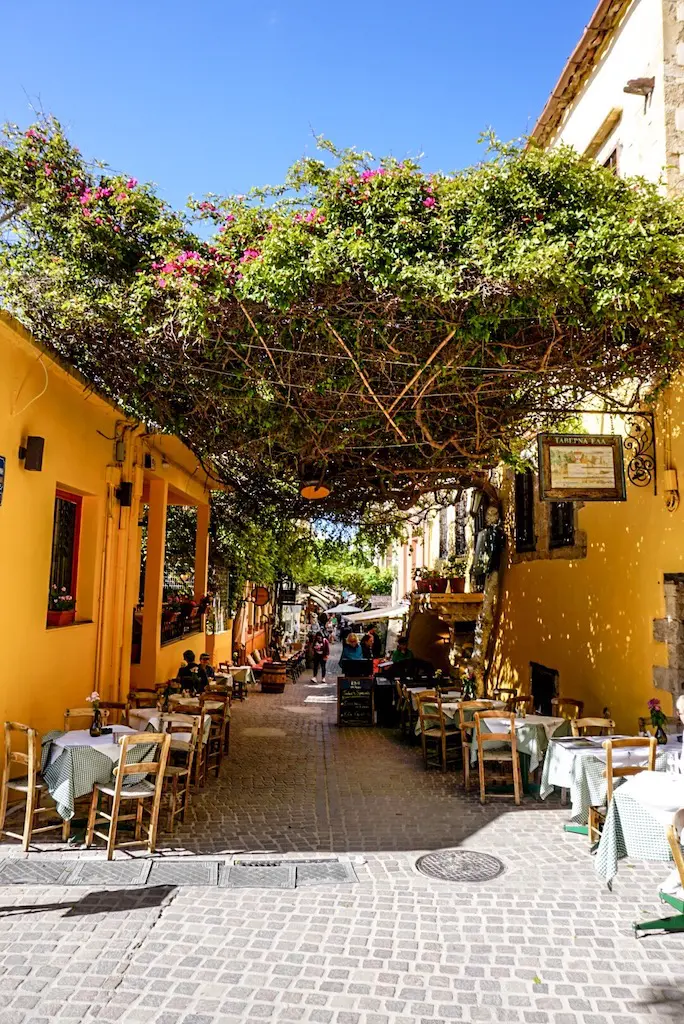
Giali Tzamissi
This once mosque is the oldest Islamic structure in Crete. The mosque was built in the 17th century where a Venetian church once stood. The building hasn’t been used as a mosque since 1923, and today, it’s used as an exhibition space. The building is situated in the harbour and looks towards the Venetian lighthouse.
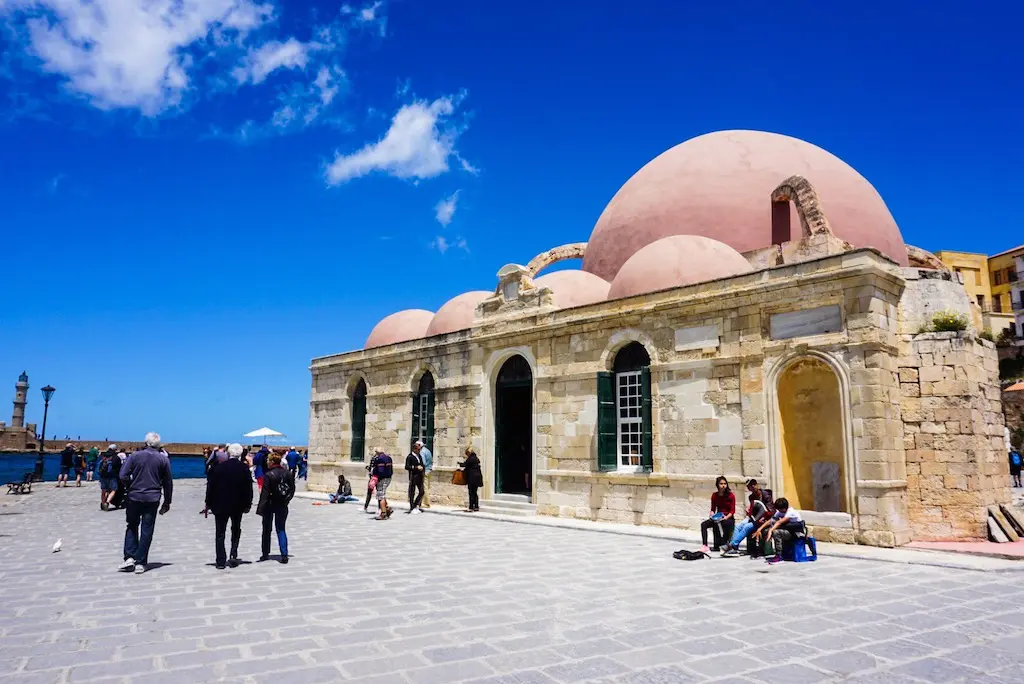
Check out the Cathedral
As you walk towards the harbour from the bus station, you will most likely walk past the old Venetian Cathedral. During the Ottoman era, the cathedral was used as a soap factory. The belfry you see today was once where cauldrons were housed, in which soap production materials were boiled. In another part of the church that was used as a warehouse, there was once a picture of the Virgin Mary.
Legend says that in the mid-19th century, a man named Tserkaris was working at the soap factory. Apparently, the Virgin Mary appeared in a vision and told him to leave as this was her home and not a place for soap-making!
The craftsman left, taking the picture of the Virgin Mary with him. Shortly after that, Pasha’s child fell into the well to the south of the temple. Full of despair, Tserkaris appealed to the Virgin Mary to help him save his child and promised that, in return, he would give the church back to the Christians. The child got out of the well safe and sound, and the Tserkaris kept his promise and started the construction of the new church.

Pick up some souvenirs
One of the things I love when travelling is walking around the souvenir shops, Although I usually stick to buying fridge magnets to add to my ever-growing collection! However, I was travelling with my parents, who can’t help coming home with many souvenirs from every trip! This trip was no exception.
There are so many beautiful shops where you can buy jewellery, ceramics, and other souvenirs in Chania; however, one place is worth mentioning: Melody Ceramics. This mother and son duo work together and produce some beautiful handcrafted ceramics, I highly recommend visiting their shop. You can even watch them making some of their products, and they are also happy to answer any questions about the shop and the local area.
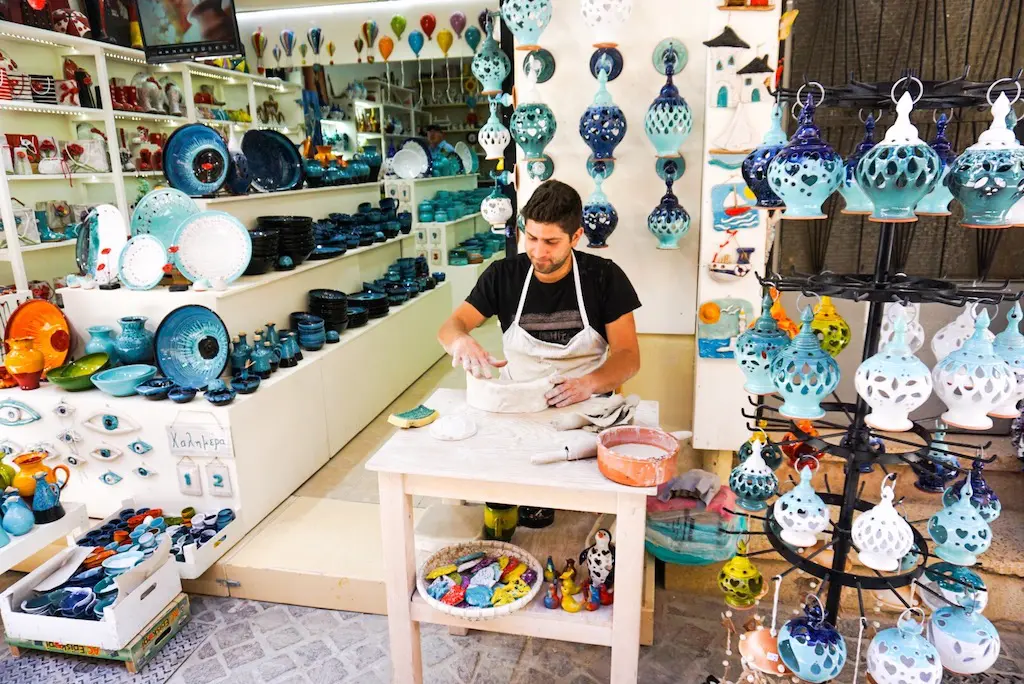
Final Thoughts On Souda Bay
I have to say, although I’d never heard of Souda Bay before I arrived, I was pleasantly surprised. Even with only the afternoon in this lovely place, we saw quite a lot and explored some of the local histories. It has definitely made me want to book a trip to Crete with the view of exploring more of the area. If you have the chance to visit Chania and Crete, I would very much recommend it. It has a fabulous history and beautiful surroundings, all thrown together with that famous Greek hospitality.
Not visiting by cruise ship and ooking for somewhere to stay? If so, I recommend using Booking.com.
Thanks so much for stopping by; I appreciate everyone who takes the time to read and make it to the end! I have lots of exciting new content in the next few weeks, so make sure you pop back to catch up!
Remember to follow our social media accounts for more travel inspiration and updates.
Happy travels!



